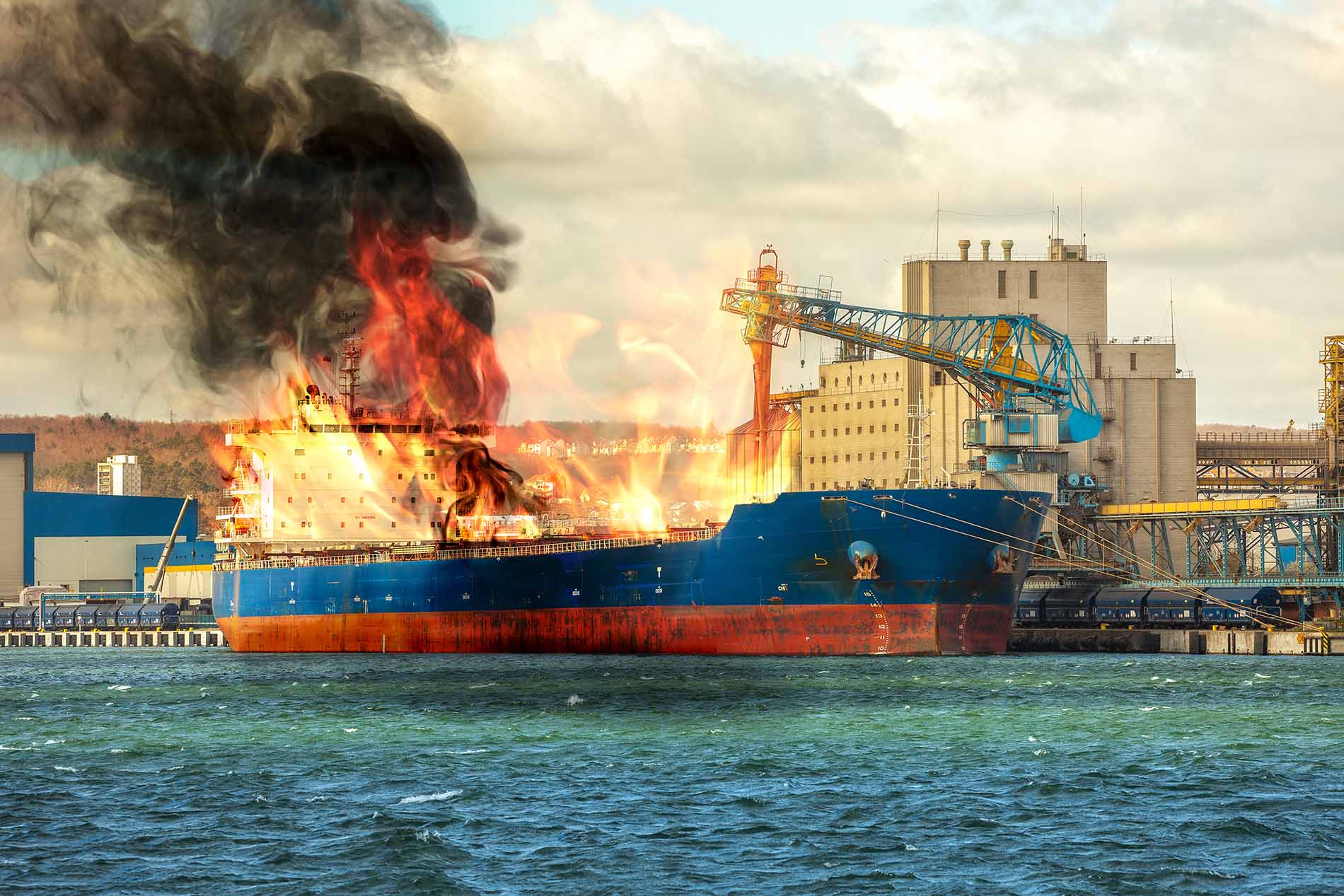It is well known that the shipyard industry is a highly hazardous work environment. One of the most recognized hazards is employee exposure to “fire events." OSHA has written the standard “Fire Protection in Shipyard Employment” (1915 Subpart “P”) for shipyards to implement and maintain. The standard is intended to protect all employees working at the shipyard from burns and other possible injuries when exposed to fire events. A shipyard can begin to mitigate its risk to employee injuries by fully understanding a few of the elements of the OSHA standard and implementing a plan for their facility.
- Write it down.
The first element of protecting employees from a fire event is to have a written fire safety plan. In drafting the plan, a shipyard should assess their operations to identify the areas where fire hazards may exist. These areas need to have specific guidance on fire preventive measures, how to sound the alarm, emergency contact information for fire responders, evacuation areas, and a process for accounting for each employee’s safety. Employees need to be trained on their responsibilities during a fire event. The plan needs to be reviewed annually and made available at regulatory request.
- Communicate the plan to everyone working in your yard – including subcontractors.
Once the plan is completed, it is the shipyard’s responsibility to ensure it is communicated and understood by all individuals visiting or working at the facility. Since a growing number of shipyards are dependent on outside laborers to accomplish their work, the shipyard is responsible for instructing third-party workers on the elements of the fire plan. Before starting work, subcontractors should communicate to the shipyard any added fire hazards being brought to the facility and the process to control the hazard.
- Don’t forget about fire suppression systems on your vessels.
One significant, and often overlooked, hazard that vessels bring into shipyard operations is the shipboard fire suppression system. These systems are often left unaddressed during shipyard operations and pose a life-or-death situation to employees working in the discharge areas. These systems, both manual and automatic, should be disengaged or use positive means to prevent discharge.
- Outline your process for responding to a fire event.
The OSHA standard also requires a shipyard to have a designated process for a fire response. The shipyard can have an internal trained fire response team or rely on an external local municipality fire department. The determining factor for internal vs. external is contingent on the actual response time to the shipyard by the responding fire unit. If the response time exceeds 15 minutes, then the shipyard can be required to have an internal fire response team. In some cases, shipyards may choose to have a combination of both internal and external response teams, since several shipyard workers may be trained volunteer firefighters. >
When using an external fire response organization, the shipyard needs to establish a liaison with the organization to ensure a full understanding of what each group will be required to perform. Some municipality fire department are not adequately trained to perform marine firefighting, thus exposing themselves to unwanted risk. The two groups are required to conduct an annual physical fire exercise to identify areas for improvement. Our blog on working with outside response agencies gives a full outline of how to engage with fire departments before a workplace emergency occurs.
Internal fire response teams can be more effective during fire events simply because of their immediate knowledge of the shipyard and their quick response. The downside toward internal response teams is that they are costly and personnel is hard to maintain.
- Understand where hot work occurs in your facility.
Another often-overlooked area of a fire safety plan is an outline of any hot work the vessel’s crew will be performing while in the shipyard. The OSHA standard includes measures to prevent a fire event, such as inspecting all areas before starting hot work. When any flammable and combustible materials or gases are in the hot work areas, they are required to be removed immediately. If materials cannot be moved, then a trained firewatch will be assigned to the area to prevent the start of a fire.
- Purchase and maintain equipment necessary to prevent and fight fires.
Firefighting equipment, including fire extinguishers, fire pumps, hoses, etc., plays a major role in any fire safety plan. Employees required to use firefighting equipment should be educated on the limitations of the equipment. Firefighting equipment needs to be maintained in a state of readiness. It needs to be inspected monthly for any deficiencies and replaced when defects are found.
In summary, OSHA has acknowledged that shipyards are dangerous environments to work in and around when it comes to fires. Therefore, to protect our employees from fire events, shipyards need to have an effective and updated fire safety plan. For additional guidance on fire safety at your facility, contact your AEU Loss Control manager or click here to have someone contact you. ALMA members can access our full resource library of fire safety materials here (login required).
REFERENCES
129 CFR 915 Subpart P - Fire Protection in Shipyard Employment
OSHA Maritime Fire Protection Standard
OSHA Fire Protection in Shipyard Employment - Presentation


